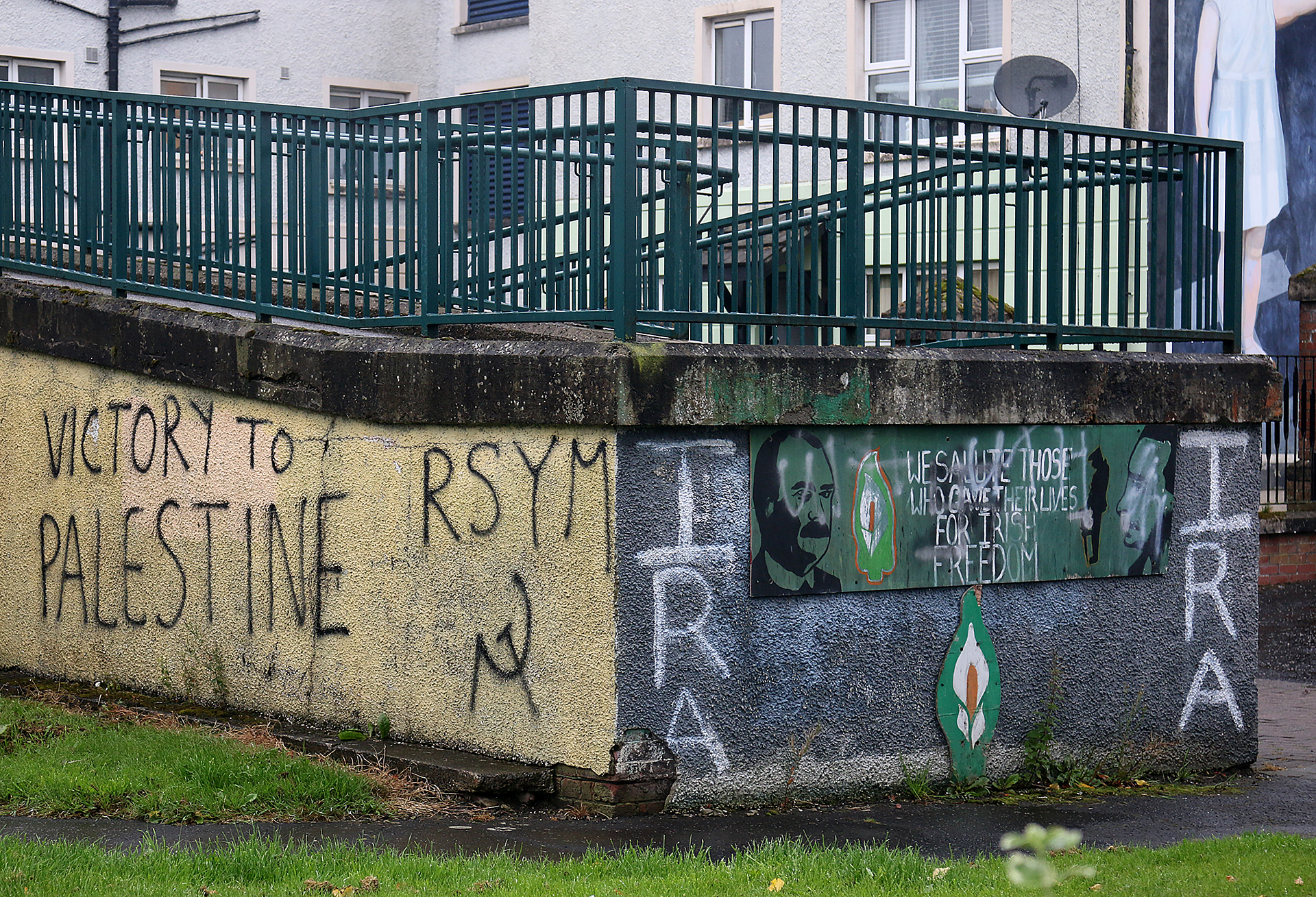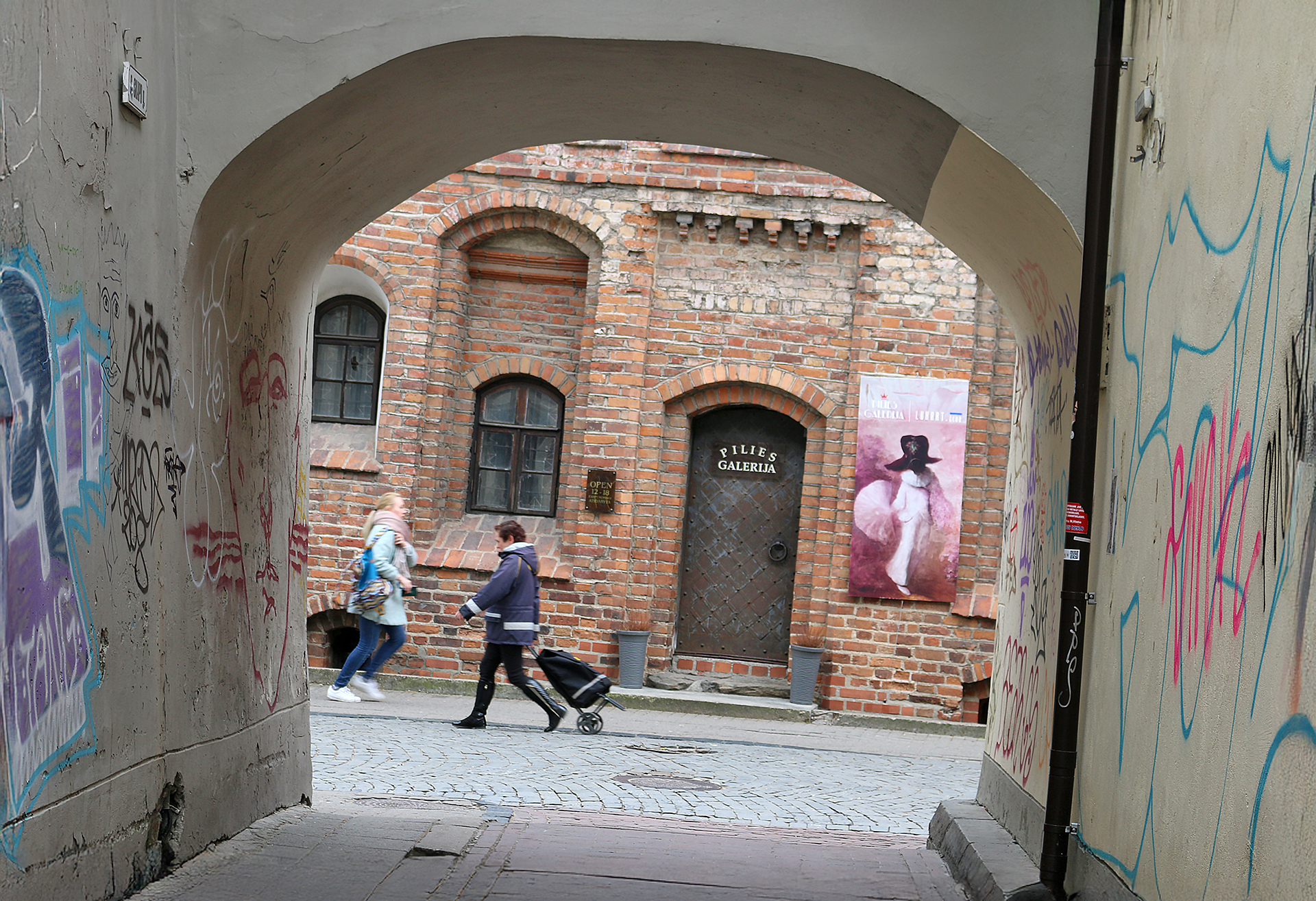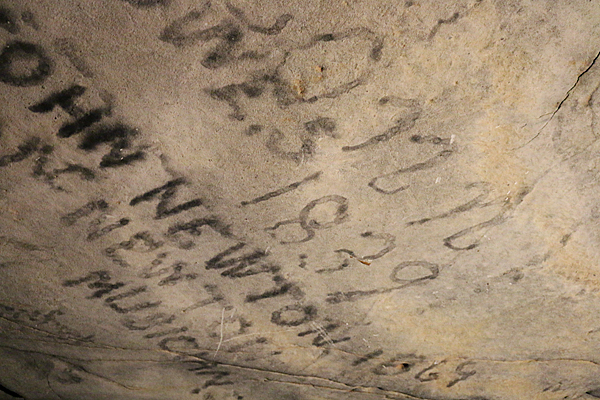Note: This article pertaining to Graffiti: Historic, Art, or Vandalism? was originally published on Friday, August 8, 2014 at 2:38 in the afternoon and has been updated.
While on the Historic Tour at Mammoth Cave National Park in Kentucky, the park ranger who was guiding the group pointed to some graffiti in one area of the cave — such as what you see on the limestone cave ceiling in the featured photograph at the top of this article, which from 1839 is the oldest known graffiti in the cave and created with the soot from burning candles…
Graffiti: Historic, Art, or Vandalism?

…but he also said that the graffiti which was etched in a rock from 1970 should not have been there, as it would have been considered vandalism and illegal.
The exclamations of “Oooh!” and “Woooow” and “Ahhh” which emanated from people on the tour — excitedly taking pictures of graffiti from 1839 and commenting on how old it was — prompted me to ask the question: does the age of when the graffiti was created determine whether graffiti is historic, art — or vandalism, plain and simple?
Graffiti is defined as writing or drawings scribbled, scratched, or sprayed illicitly on a wall or other surface in a public place; with the meaning of the word illicit as forbidden by law, rules, or custom.

Growing up in Brooklyn, I used to see graffiti everywhere: on the walls behind stores; inside subway cars; and spray-painted on overpasses and inside tunnels. No matter how ornate the “work” might have been, I had never looked at any of that graffiti and thought “wow — that looks nice”; nor have I ever considered it a legitimate form of art — even as a student at both a special high school devoted to artists and one of the top art schools in the world during my college years. I had always considered it vandalism — and still do.
Carving something into the trunk of a tree can be harmful to it — and perhaps introduce elements into the carving that could eventually kill the tree.
I also never really understood the desire to deface the property of someone else with some moniker or gang tag pronouncing that “we were here.” Whenever you travel, have you ever had the desire to “leave your mark” by what amounts to damaging property which belongs to an entity other than yourself?
When I was in Malta, I do have to admit that it was interesting seeing graffiti from centuries ago — the 1400s as one of the centuries, if I recall correctly — literally etched in the stone at the ruins of the temples in that country, which are considered to be some of the oldest objects in the world created by mankind. It presented a small window into the mindset of life back then; but does the supposedly intrinsic historical value of that particular recording of time justify and neutralize the fact that it is technically still vandalism?
If so, then at what threshold does graffiti have historic value? With the example of Mammoth Cave National Park, is 1839 historic but 1970 not? What about 1880 versus 1940? 1910 versus 1930?
Final Boarding Call

Who is to say that graffiti created today — right now — cannot have historic value 100 or 1,000 years from now?
I suppose that what I am trying to say is that myriad other ways exist — and have always existed — to leave your mark somewhere without defacing the property of someone else…
All photographs ©2014 and ©2024 by Brian Cohen.
